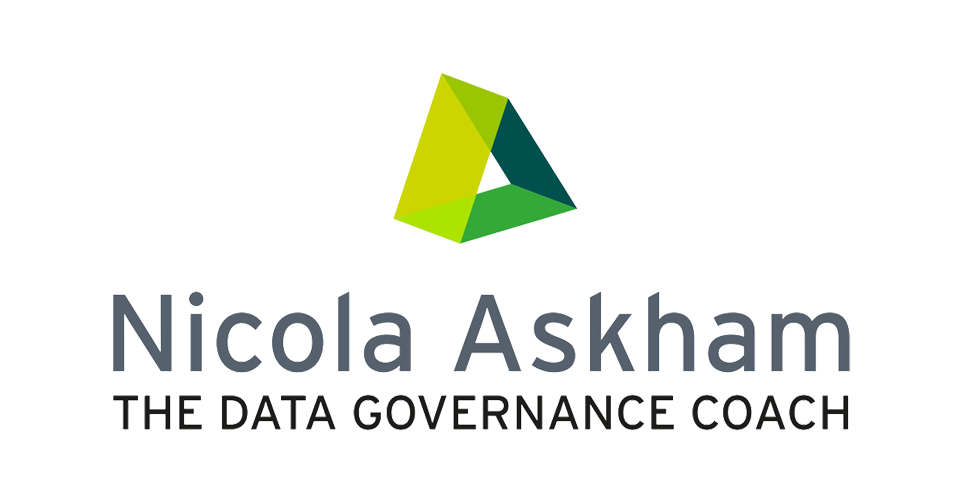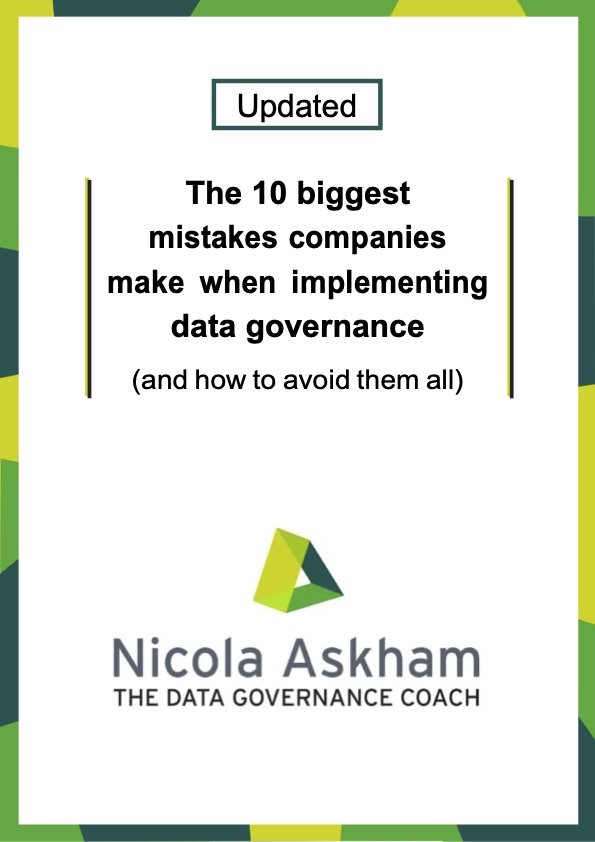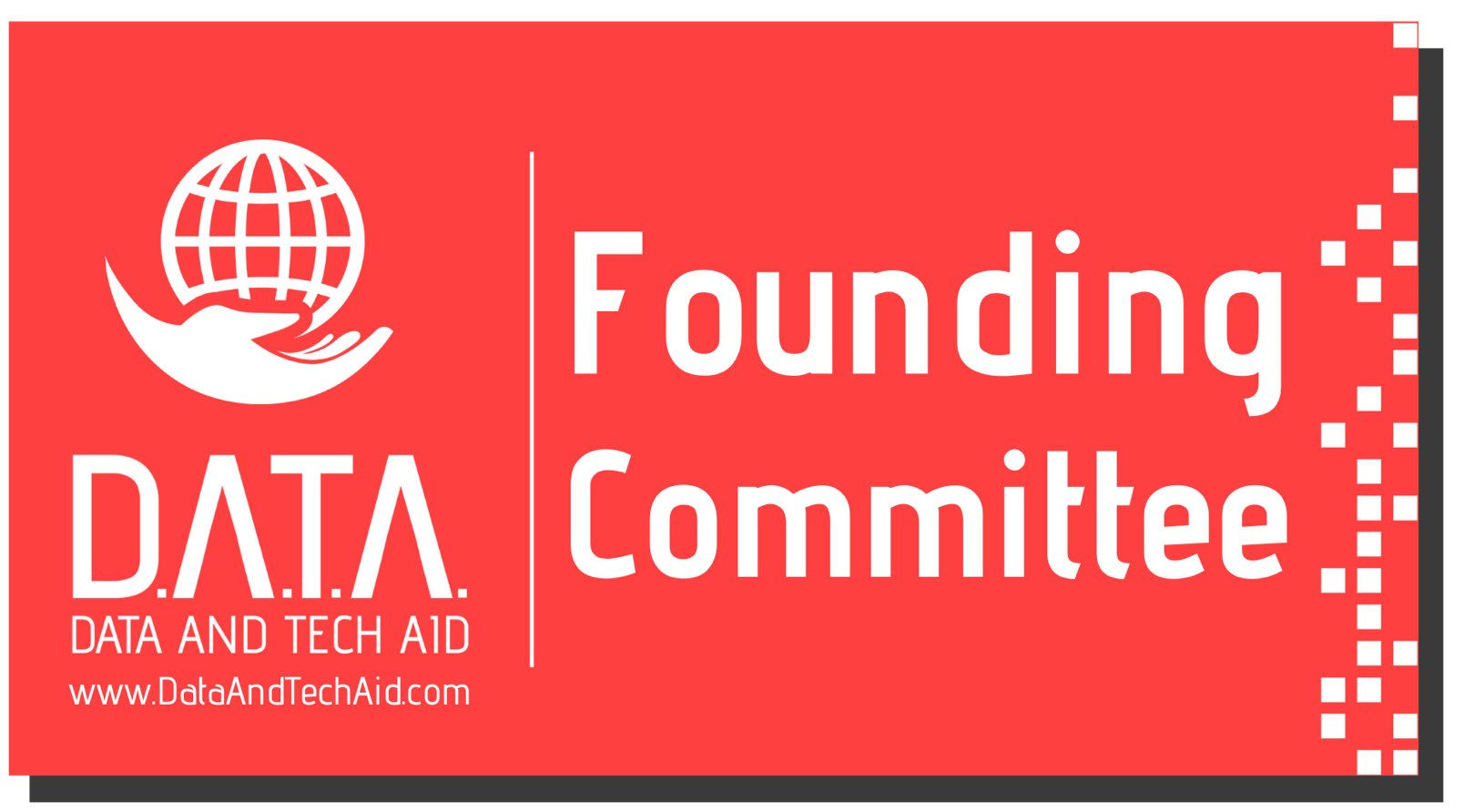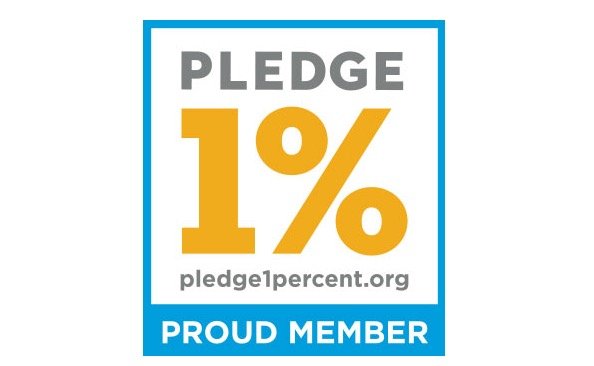This Data Governance interview is with Michael Nicosia who I met at DGIQ this year in San Diego. His presentation was full both of humour and also his enthusiasm for Data Governance, so I knew that I had to ask him to do an interview and share that enthusiasm with you all...
Mr. Nicosia joined TIAA-CREF in November 2004 and is currently responsible for developing and deploying business-led data and process governance practices and capabilities, as well as leading the development of Finance & Actuarial (F&A) multi-dimensional, multi-year vision, strategy, and roadmap. He is also an active member of the company’s Enterprise Data Governance council.
Prior to joining TIAA-CREF, Mr. Nicosia worked as a Managing Consultant for The Amherst Group Limited, a consulting firm that provides advisory services to Shared Services organizations around the world. During this time, he provided strategic advice and counsel to Fortune 100 companies on organizational design, implementation of shared services management practices, and the re-design of standard service delivery processes across multiple functional areas and industries.
How long have you been working in Data Governance?
In late 2010, I assumed the responsibility for defining and implementing sustainable governance practices within F&A and building a permanent data governance function that will provide on-going advice, counsel and support for data governance initiatives
How did you start working in Data Governance?
Now that is an interesting story. When I joined F&A in 2007, I was part of a new Finance Transformation Team that was responsible for changing the way F&A operates (i.e. process improvements, organization re-design, etc.). As part of this initial role, I was selected to lead a very large multi-year transformation program that was focused on strengthening and automating our critical F&A business processes, improving our overall data quality, re-designing our data integration, implementing new analytical tools and solidifying the underlying infrastructure. This program opened my eyes to the importance of data within an organization as well as the importance of having both efficient processes and high-quality data.
Towards the end of the transformation program, Our Corporate IT area launched a data transformation program that included a work stream focused on establishing Enterprise Data Governance. I was asked to attend a governance meeting in place of my boss – it was this meeting that I really started working in the Data Governance space – that was the summer of 2010. However, to be honest, at that time establishing a data governance function within F&A was not even remotely on my radar. It was not until I was approach by my boss and no less than four other people (business and IT) about a new role around data governance that we were creating in F&A – I turned it down initially, because I did not see myself doing this type of work. As the months went by, I did a little research and analysis of the opportunity and found that very few companies were approaching data governance from a purely “business perspective” – so I could be on the leading edge. Based on this and other factors, I accepted the roll and have never looked back.
What where your initial thoughts when you first fully understood what you had got into?
Honestly? My first real exposure was attending the IBM Information on Demand conference in October of 2010. My take away from that conference (as well as prior research) was that “this was not rocket science” and that I could definitely take my prior experience and acumen and apply it in this space.
Are there any particular resources that you found useful support when you were starting out?
I would like to think that I was really smart in this space, but the reality was that I had zero direct experience – what I had was very relatable experience. However, I was smart enough to know what I did not know, so I hired an external advisor to help educate and coach me through the initial planning. I did not go the route of big consulting firm, multiple resources because I felt that was not necessary. This advisor was with me for about 3-months at the start back in early 2011and as he would tell you – he started out as an advisor and we migrated very quickly to more collaboration as I was able to bring my prior consulting experience to bear in thinking through the strategy, approach and plan.
What is the biggest Data Governance challenge you have faced so far?
Adoption of good data governance practices! As most of the companies that I have come into contact with over the last several years will attest. The hardest part is getting staff to see the value in managing their data and making that structured management part of their normal operations. We have addressed this in a number of different ways, most importantly is our focused approach on change management. The reality is, that the level of success an organization achieves with their Data Governance efforts will be in direct proportion to the amount of effort they put forth on building awareness, educating and training staff. I think that if you polled other data governance practitioners, you would find that they all would agree that change in any form, is the hardest thing for an organization and individual to accept!
Whether it is changing jobs, homes, applications, processes, staff, etc., each change comes with a unique set of challenges – and stakeholders, and most people if given a choice would not change – why? Because we are “creatures of habit” and prefer routine and repetition – and change is HARD! So, based on my experience focusing on Change Management as part of your governance initiative could be the difference between achieving “just compliance” or “full adoption” of good governance practices.
What have you implemented or solved so far that you are particularly proud of?
I would say that I am most proud of a couple of things. The first is building a sustainable data governance function within F&A. The second would be the level of engagement and awareness we have built over the last few years.
My team and I have worked hard over to broaden the understanding of data governance and implement standard governance practices across our most critical data assets. While we are far from done in this effort, we have been able to cover off some important areas within F&A – such as investment accounting, treasury and accounts payable. The holistic approach we have taken - addressing multiple governance components from Meta data to data quality to business architecture to change management – has enabled us to bring broad awareness of why data governance is important and has resulted in a high-level of engagement across different levels F&A staff. For example, the attendance rate for our Stewardship Committee meetings has averaged north of 70% over the last three plus years – and we have seen roughly a 30-point increase in overall data governance awareness during this time as well.
How has changing roles impacted your ability to improve Data Governance within Finance & Actuarial?
From the start, we have taken a “plug-n-play” approach to data governance that allows us to shift focus and change our approach based on changes to roles, organizational structures, etc. We spend dedicated time each fall reviewing and refreshing our data governance goals, strategies and measures to ensure that they are aligned with where F&A is heading in the coming years. And, periodically throughout the year we make minor “course corrections” to address changes in data domains, Stewardship, methodology and priorities. So, we are constantly re-evaluating the effectiveness of our data governance efforts so as to minimize the impacts of broader changes.
What single piece of advice would you give someone just starting out in Data Governance?
The most important piece of advice I would give to anyone just starting out is spend a good amount of time thinking and planning how best to roll-out data governance within your organization.
The reality is that we (practioners) tend to over-complicate the roll out of data governance by trying to “eat the elephant” all at once or, worse, we focus too much time and effort at the start on tactical solutions so we can show some “quick wins”. But we tend forget that doing the simple things first like figuring out where you are going before you start your journey (have a plan) and will tend to yield the best results.
President Dwight Eisenhower was often quoted as saying “Plans are worthless, but planning is everything.” If you think about it, there is definitely some truth to this quote, but what he is really saying is that the process of planning is the single most important action you can take to set a strong foundation for success.
Why you are going there [your goal/destination] is more a function of how you want to operate in the future than any single problem you are trying to solve. It’s all about having a clear view of how you will operate and what your teams will need from the start.
Finally, what do you wish you had known or done differently when you were just starting out in Data Governance?
At this stage in our data governance journey there is one particular thing that looking back, we should have done sooner – that is to develop a formal, cohesive data strategy.
Over the last 3-4 years we have been executing against a clear data governance vision and, as it turns out, all the right components (i.e. data governance, data management, data architecture, etc.) we would have include in a data strategy had we formalized this at the beginning of our journey. A cohesive data strategy provides a foundation that you can use to “rally” your organization into action. And if complete can provide a clear vision and pathway to what we see as the ultimate goal of all your efforts – adoption of good data governance and data management practices across the organization.
Michael Nicosia is the VP of Strategy & Data Governance at TIAA-CREF, a national financial services organization with over $860 billion in assets under management (as of 3/31/2015) and the leading provider of retirement services in the academic, research, medical and cultural fields. He has been guiding the Finance & Actuarial area of TIAA-CREF on its data governance journey since 2010-2011. The views expressed herein are solely those of the author and do not necessarily reflect the views of TIAA-CREF.
My free report reveals why companies struggle to successfully implement data governance. Discover how to quickly get you data governance initiative on track by downloading this free report












